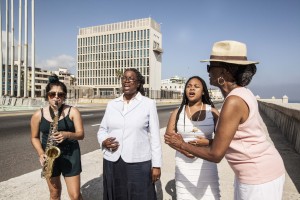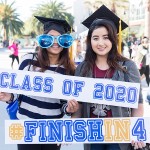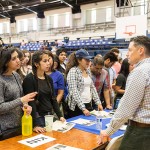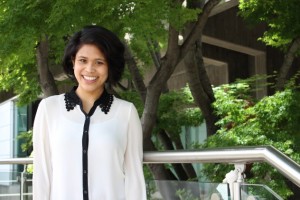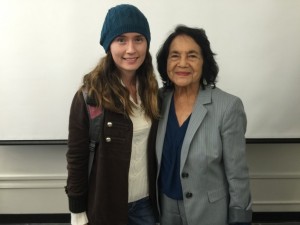-

-
SJSU Moss Landing Marine Lab students, faculty and staff hosted on Open House April 30 and May 1.
Photos by David Schmitz
-
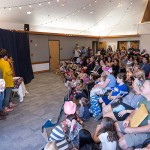
-
Visitors to MLML listen intently to presentations about marine life.
-
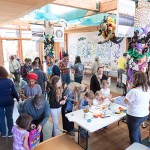
-
More than 2,200 guests visited during the two-day open house event.
-

-
Children looked at skeletons of marine animals at the Moss Landing Marine Lab Open House.
-

-
Nautical supplies are stored on site.
-
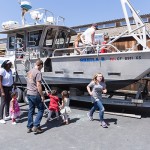
-
Children climb aboard a research boat.
-

-
Guests toured the facilities at the Moss Landing Marine Laboratories.
-
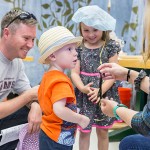
-
Guests learned about the important role of kelp in Monterey Bay.
-
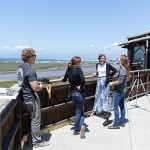
-
Visitors look at the view of Moss Landing.
More than 2,200 visitors attended the Moss Landing Marine Labs Open House April 30 and May 1. Members of the public were invited to listen to presentations from SJSU students, faculty and staff and to engage in educational activities about marine life in the Monterey Bay.
Presenters and presentation topics included:
Laurel Lam
Habitat-based life history variations of lingcod along the US West Coast.
Fishery stock assessments are often based on quantifiable life history traits (i.e. growth rate, maturity, fecundity and mortality) and assumes that those characteristics are stable and unchanging throughout a species range or management area of interest. This results in regulations (minimum size limits, catch limits) and policies applying equally over broad geographic regions. They do not take into account regional or habitat-based variations in growth and maturation rates even though many fish species are known to grow slower, attain larger sizes, and reach sexual maturity later at higher latitudes. In my study, I will be examining lingcod, a commercially and recreationally valuable top predator found along the US West Coast, and how its life history parameters can vary both latitudinally and between two essential habitats, soft-bottom and rocky substrate. Understanding the potential for these variations can help us better understand the implications of using small-scale, regional and habitat-specific sub-stocks to manage our coastal fisheries.
Kristin Walovich
Search and Discovery! A graduate student’s search for new species of Ghost Shark.
Graduate students at MLML’s Pacific Shark Research Center are on the search for new species of the elusive and mysterious Ghost Shark. Ghost Sharks, relatives of sharks and rays, are rarely seen and so much is left to discover about these deep-sea creatures. But before we can answer questions like ‘Where do they live?’ or ‘How big do they get?’, we need something far simpler…a NAME! Join Kristin Walovich to discover how scientists find and name these strange sharks.
Jim Harvey
MLML: Who We Are, What We Do, and Where We Do It.
The director of Moss Landing Marine Labs will discuss ongoing projects and the MLML community. Join Jim as he talks about the ins and outs of MLML and shows a new introductory video!
Tracy Campbell
Microbiomes of Ecologically Dominant Zooxanthellate Anthozoans: A Tropical-Temperate Comparison
Marine bacteria are known to play an important role in cnidarian health, the cycling of organic matter, and nutrients in reef ecosystems. The breadth of investigation surrounding this relationship in tropical reefs is vast; however, little work has been done in temperate non-reef building systems. Anthopleura elegantissima is a common zooxanthellate anthozoan on the Northeastern (NE) Pacific coast, thought to be the most abundant invertebrate in the upper intertidal, yet relatively little is known about the bacterial community it harbors. In this study, we compare the bacterial communities of tropical Porites and Pocillopora species with the temperate Anthopleura elegantissima. We further compare bleached A. elegantissima polyps to polyps dark with zooxanthellae to investigate the complex relationship between host, symbiodinium, and bacteria.
Amber Reichert
First North Pacific records of the pointy nosed blue chimaera, Hydrolagus cf. trolli
The occurrence of Hydrolagus cf. trolli is reported for the first time from the central and eastern North Pacific Ocean. Using video taken during ROV surveys, specimens were identified using MBARI’s Video Annotation and Reference System database (VARS). This is a geographic range extension for this species, as it was previously only known to occur in the southern Pacific Ocean off of Australia, New Zealand, and New Caledonia.
Mo Wise
Nutrient Flux and Algal Biomass Dynamics in Tidally Restricted Regions of the Elkhorn Slough
Nutrients flux dramatically in estuarine systems due to terrestrial runoff mixing with incoming and outgoing tides from the coastal environment. The Elkhorn Slough has a dynamic nutrient flux regime, particularly in regions where developments such as roads, dikes, levees and railroad tracks have restricted flushing with the tides. These pocket regions have been shown to exhibit altered biogeochemical cycling, and through closer investigation I aim to analyze the nutrient cycling through the surface water, algae and sediments of each site I have chosen that all share a restricted flow pattern. It is necessary to understand the nutrient cycling and potential outcomes of these estuarine systems due to the fact that estuaries act as buffers between the land and sea environments, particularly between humans and our coastal zone.
Greg Bongey
Cool Critters! The Amazing Stories of Distinctive Sea Creatures That We Rarely Talk About
We humans are pretty knowledgeable about our fellow creatures of the land. For instance, most of us can tell the difference between a deer and an antelope, even though they look similar. But the ocean is different world from ours, and it is filled with many distinctive creatures that most of us have never heard of. Have you ever heard of a sea butterfly? Or a boxer crab? We all know about sea stars, but what about basket stars? Come learn about these creatures and more!
Drew Burrier
The Motion in the Ocean
A brief introduction to Physical Oceanography and Internal Waves.
June Shrestha
Ocean Optimism: Success Stories of Marine Conservation at MLML
We frequently hear of the problems threatening our oceans: global warming, invasive species, and human impacts. But where are the success stories? This talk will highlight research at MLML that have successfully informed conservation efforts to show that not all is “doom-and-gloom” for our oceans.
Victoria Vasquez
Changing The Fate of Lost Sharks: How to Bring Lesser known Species Into the Spotlight
‘Lost Sharks’ refer to chondrichthyan species that suffer from a severe lack of attention resulting in them being forgotten by the public and science. As new species are discovered, many fall within generas already heavily populated with ‘Lost Sharks’ and thereby threatens them with the same forgotten fate. In an effort to prevent the ‘Lost Shark’ pattern, an innovative naming process was used for a new species of Lanternshark, discovered off the Pacific coast of Central America. Four young shark enthusiasts, ages 8 to 14, were bestowed the naming privilege and the process was recorded. The new species is named Etmopterus benchleyi n. sp. in honor of Jaws author and subsequent shark conservationist, Peter Benchley. The common name, the Ninja Lanternshark, refers to the uniform black coloration and reduced photophores (light-emitting organs) used as concealment in this species, which are reminiscent of a ninja’s typical outfit and stealthy behavior.
Catarina Pien
Changes in the Elasmobranch Assemblage of a California Estuary
Elkhorn Slough is an estuarine embayment that drains directly into the Monterey Bay. Estuaries are environmentally productive environments providing important habitat for many marine mammals, migratory birds, and fishes, and is known to be used as a nursery for flatfishes and some elasmobranch (shark and ray) species. Over the past several decades, Elkhorn Slough has undergone several natural and anthropogenic changes, leading to both physical and biological changes, including shifts in the shark and ray populations in the Slough. Annual shark derbies and student theses have provided insight into some of the historical changes, and my thesis aims to describe the current assemblage of sharks and rays and how they are using Elkhorn Slough.
Amanda Heidt
The Path to Becoming a Marine Scientist
If you are considering pursuing marine science into higher education, or if you’d just like to learn a bit more about getting involved and the work being undertaken by students at Moss Landing, drop in for this talk regarding the path to a career in marine science, its oftentimes humorous misconceptions, and what it means to conduct research here at Moss Landing Marine Labs.
Stephanie Schneider
Ecology of Seabirds nesting at a large colony in Northern California
Despite its modest reputation, Castle Rock National Wildlife Refuge is the most populous single island Common Murre colony in California. This 16 acre island in northern California provides nesting habitat to over 150,000 Common Murres and thousands of other seabirds. Since 2006, wildlife biologists have used video and audio recordings to study the diet and reproduction of seabirds at Castle Rock. Join us and discover more about the fascinating lives of seabirds nesting at Castle Rock.
Alex Olson
Drips & Slicks: Mercury Speciation in the Ocean
A review of mercury pollution and investigating its transport into California coastal fog.
